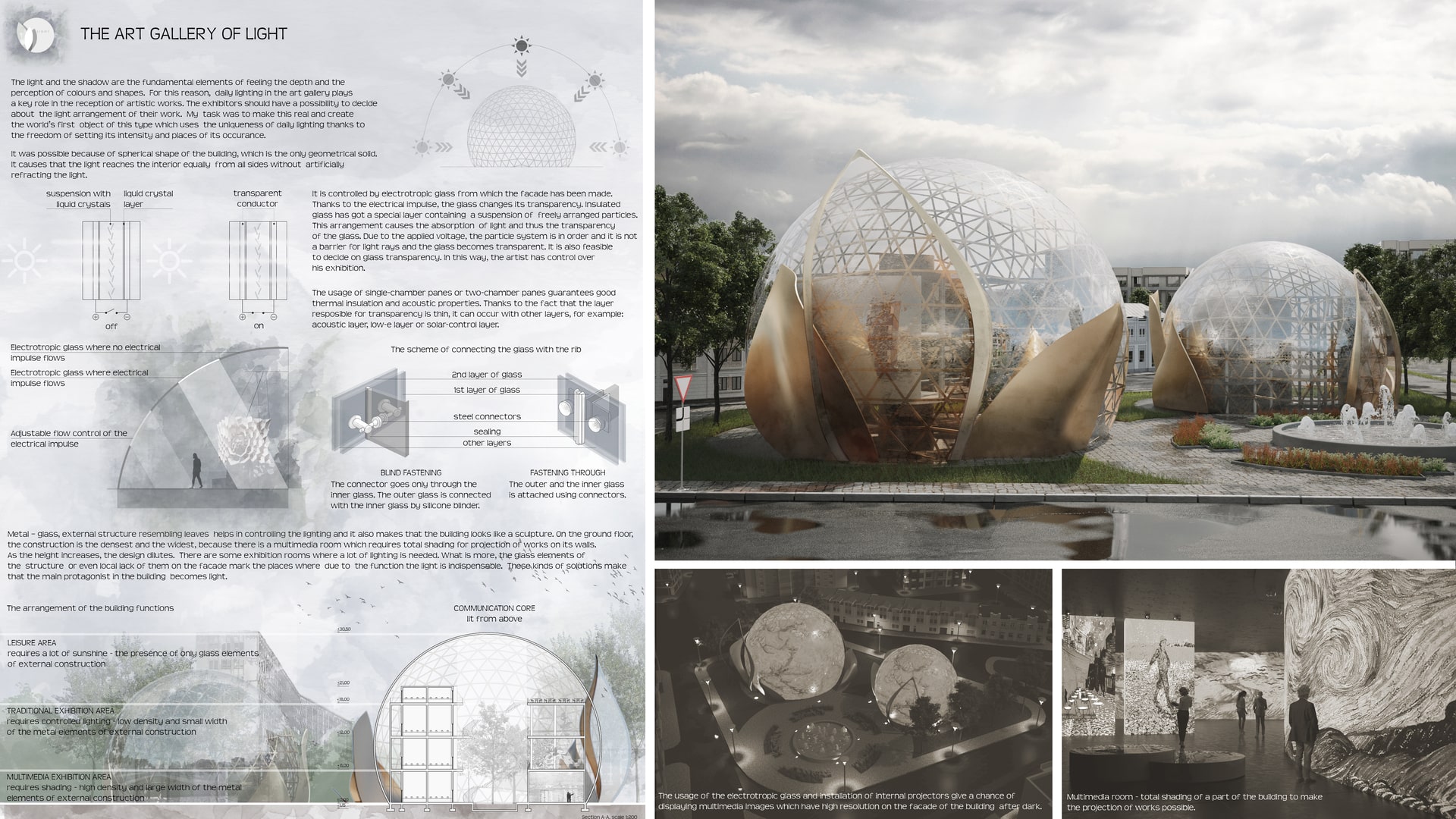Project Description
The light and the shadow are the fundamental elements of feeling the depth and the perception of colours and shapes. For this reason, daily lighting in the art gallery plays a key role in the reception of artistic works. The exhibitors should have a possibility to decide about the light arrangement of their work. My task was to make this real and create the world’s first object of this type which uses the uniqueness of daily lighting thanks to the freedom of setting its intensity and places of its occurance. It was possible because of spherical shape of the building, which is the only geometrical solid. It causes that the light reaches the interior equally from all sides without artificially refracting the light. It is controlled by electrotropic glass from which the facade has been made. Thanks to the electrical impulse, the glass changes its transparency. Insulated glass has got a special layer containing a suspension of freely arranged particles. This arrangement causes the absorption of light and thus the transparency of the glass. Due to the applied voltage, the particle system is in order and it is not a barrier for light rays and the glass becomes transparent. It is also feasible to decide on glass transparency. In this way, the artist has control over his exhibition. The usage of single-chamber panes or two-chamber panes guarantees good thermal insulation and acoustic properties. Thanks to the fact that the layer resposible for transparency is thin, it can occur with other layers, for example: acoustic layer, low-e layer or solar-control layer. The usage of the electrotropic glass and installation of internal projectors give a chance of displaying multimedia images which have high resolution on the facade of the building after dark. Metal – glass, external structure resembling leaves helps in controlling the lighting and it also makes that the building looks like a sculpture. On the ground floor, the construction is the densest and the widest, because there is a multimedia room which requires total shading for projection of works on its walls. As the height increases, the design dilutes. There are some exhibition rooms where a lot of lighting is needed. What is more, the glass elements of the structure or even local lack of them on the facade mark the places where due to the function the light is indispensable. These kinds of solutions make that the main protagonist in the building becomes light.
